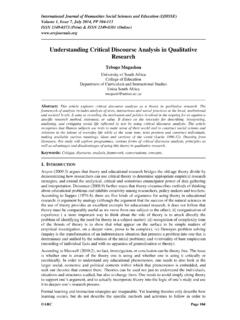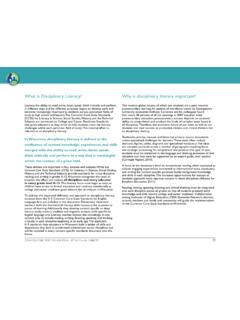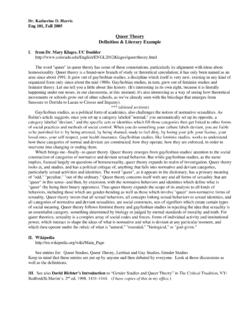Transcription of Critical Reading and Writing for Postgraduates
1 Second Edition Second Edition Second Edition Second Edition Second Edition Second Edition Second Edition Second Edition Second Edition Second Edition Second Edition Second Edition Second Edition Second Edition Second Edition Second Edition Second Edition Second Edition Second Edition Second Edition Second Edition Second Edition Second Edition Second Edition Second Edition Second Edition Second Edition Second Edition Second Edition Second Edition Second Edition Second Edition Second Edition Second Edition Second Edition Second Edition Second Edition Second Edition Second Edition Second Edition Second Edition Second Edition Second Edition Second Edition Second Edition Second Edition Second Edition Second Edition Second Edition Second Edition Second Edition Second Edition Second Edition Second Edition Second Edition Second Edition Second Edition Second Edition Second Edition Second Edition Second Edition Second Edition Second Edition Critical Readingand Writing forPostgraduatesMike Wallace and Alison Wray This book confirms that the answers that you get depend on the questions that you Wallace and Wray demonstrate that Critical engagement with one s sources pays dividends in terms of a deep understanding of what those sources tell us.
2 Developing the skills of the Critical reader helps to make budding researchers into better writers, through the realisation of what works better and what works less well when communicating ideas and information. The book is written in a clear and straightforward fashion that is guaranteed to make you think, as well as encouraging constructive and engaging modes of Writing that will improve your connection to your audience. Professor Graham Crow, University of SouthamptonPraise for first edition: A very clear, accessible introduction that will be invaluable to postgraduate students trying to engage with Reading and Writing in a Critical way. Lee, Professor of Social Research Methods, Royal Holloway University of LondonIn this book the authors show students how to read critically and how to write using Critical techniques. The book is a must-have resource for postgraduate students and early-career academics.
3 This new edition has been expanded and updated to include: A range of examples encompassing disciplinary areas including linguistics, education, business and management Commentaries on using e-resources and features of e-research New material available online including access to journal articles and four completed Critical book is for postgraduate students, methods course tutors and researchers. Mike Wallace is a Professor of Public Management at Cardiff University. Alison Wray is a Research Professor in Language and Communication at Cardiff Reading and Writing for PostgraduatesWallace and Wray2 ESecond EditionAdditionalOnline Materialwallace and 113/12/2010 15:46 Critical Reading and Writing for 102/12/2010 11:57:40 AMEducation at SAGE SAGE is a leading international publisher of journals, books, and electronic media for academic, educational, and professional markets.
4 Our education publishing includes:accessible and comprehensive texts for aspiring u education professionals and practitioners looking to further their careers through continuing professional developmentinspirational advice and guidance for the classroom u authoritative state of the art reference from the leading u authors in the fieldFind out more at: 202/12/2010 11:57:40 AMCritical Reading and Writing for PostgraduatesSecond EditionMike Wallace and Alison Wray Education at SAGE SAGE is a leading international publisher of journals, books, and electronic media for academic, educational, and professional markets. Our education publishing includes:accessible and comprehensive texts for aspiring u education professionals and practitioners looking to further their careers through continuing professional developmentinspirational advice and guidance for the classroom u authoritative state of the art reference from the leading u authors in the fieldFind out more at: 302/12/2010 11:57.
5 41 AM Mike Wallace and Alison Wray 2011 First edition published 2006 Reprinted 2006, 2007, 2008 Second edition published 2011 Apart from any fair dealing for the purposes of research or private study, or criticism or review, as permitted under the Copyright Designs and Patents Act, 1988, this publication may be reproduced, stored or transmitted in any form, or by any means, only with the prior permission in Writing of the publishers, or in the case of reprographic reproduction, in accordance with the terms of licences issued by the Copyright Licensing Agency. Enquiries concerning reproduction outside those terms should be sent to the material on the accompanying website can be printed off and photocopied by the purchaser/user of the book. The web material itself may not be reproduced in its entirety for use by others without prior written permission from SAGE. The web material may not be distributed or sold separately from the book without the prior written permission of SAGE.
6 Should anyone wish to use the materials from the website for conference purposes, they would require separate permission from us. All material is Mike Wallace and Alison Wray 2011 SAGE Publications Ltd1 Oliver s Yard 55 City RoadLondon EC1Y 1 SPSAGE Publications Teller RoadThousand Oaks, California 91320 SAGE Publications India Pvt LtdB 1/I 1 Mohan Cooperative Industrial AreaMathura RoadNew Delhi 110 044 SAGE Publications Asia-Pacific Pte Ltd33 Pekin Street #02-01 Far East Square Singapore 048763 Library of Congress Control Number: 2010925469 British Library Cataloguing in Publication dataA catalogue record for this book is available fromthe British LibraryISBN 978-1-84920-561-0 ISBN 978-1-84920-562-7 (pbk)Typeset by C&M Digitals (P) Ltd, Chennai, IndiaPrinted by MPG Books Group, Bodmin, CornwallPrinted on paper from sustainable 402/12/2010 11:57:41 AMContentsList of Figures and Tables viiHow to Use this Book viiiAuthor Biographies xiAcknowledgements xiiPart One.
7 Becoming a Critical Reader and Self- Critical Writer 1 1 What it Means to be Critical 3 2 Making a Critical Choice 14 3 Getting Started on Critical Reading 29 4 Getting Started on Self- Critical Writing 44 5 Creating a Comparative Critical Summary 54 Part Two: Developing an In-Depth analysis 67 6 The Key to a Mental Map for Exploring the Literature 69 7 The Argument Component of your Mental Map 80 8 More Components: Knowledge, Literature, Intellectual Projects 90 9 Developing a Critical analysis of a Text 10710 A Worked Example of a Critical analysis 11711 Developing your Argument in Writing a Critical Review of a Text 502/12/2010 11:57:41 AMcritical Reading and Writing for postgraduatesviPart Three: Putting your Critical Reviews to Work 14712 Focusing and Building up your Critical Literature Review 14913 Integrating Critical Literature Reviews into your Dissertation 16714 Tools for Structuring a Dissertation 18615 Using the Literature in Research Papers and Oral Presentations 197 Appendices 2091 Abridged article: One word or two?
8 (Wray and Staczek) 2112 Abridged article: Sharing leadership of schools through teamwork (Wallace) 2223 Blank form for the Critical analysis of a text 2374 Logic checksheet: Developing a logical overall argument in a dissertation 247 Index 602/12/2010 11:57:41 AMList of Figures and TablesFIGURES How theory and evidence interact through modelling 20 Dimensions of knowledge claims and their vulnerability to rejection 86 Tools for thinking and the creation of three kinds of knowledge about the social world The logic of the overall argument in a dissertation Developing the logic of the overall argument in a dissertation The logic of the overall argument in a paper reporting your research 199 TABLES Targeting an effective balance between different academic traditions 8 Linking a Critical approach to your Reading with a self- Critical approach to Writing 12 Identifying flaws in arguments 36 Components of the mental map 81 Types of literature and indicative limitations of claims to knowledge expressed in them 96 Five intellectual projects for
9 Studying aspects of the social world 102 Linking Critical Synopsis Questions with Critical analysis Questions Example of completed logic checksheet 187 702/12/2010 11:57:41 AMHow to Use this BookThe book is aimed primarily at postgraduate students in the social sciences, embarked on work requiring an engagement with the published (and unpub-lished) literature, including coursework essays, Masters dissertations, Doctoral dissertations or theses, and related research papers and oral presentations. But Critical Reading and self- Critical Writing are highly transferable skills, crucial to effective professional academic publications, presentations and research grant proposals. So the book will also be useful to early-career academics who wish to enhance the quality of their research Writing by Reading the literature more critically and by honing their skills as self- Critical writers.
10 The book design makes it suitable for self-directed learning, for use as a class textbook in a research methods module and as a handbook from which supervisor and student can work side-by-side. In addition, peer mentors within the academic profession may find a role for it in supporting their less experienced colleagues. The text is supplemented by on-line self-study mate-rials (see ). They include exercises illus-trating our approach to in-depth Critical analysis of individual texts, and electronic versions of forms for analysing texts and checking the development of the overall argument in a structured approach to learning Critical Reading and self- Critical writ-ing skills is underpinned by two core ideas. The first is the recognition of aca-demic discourse as a two-way constructively Critical process of enquiry where: as a Critical reader, one evaluates the attempts of others to communicate with and convince their target audience by means of developing a sufficiently strong argument; and as a writer, one develops one s own argument, making it as strong and as clear as possible, so as to communicate with and convince one s target product of Critical Reading is, typically, a written account of what has been read.


